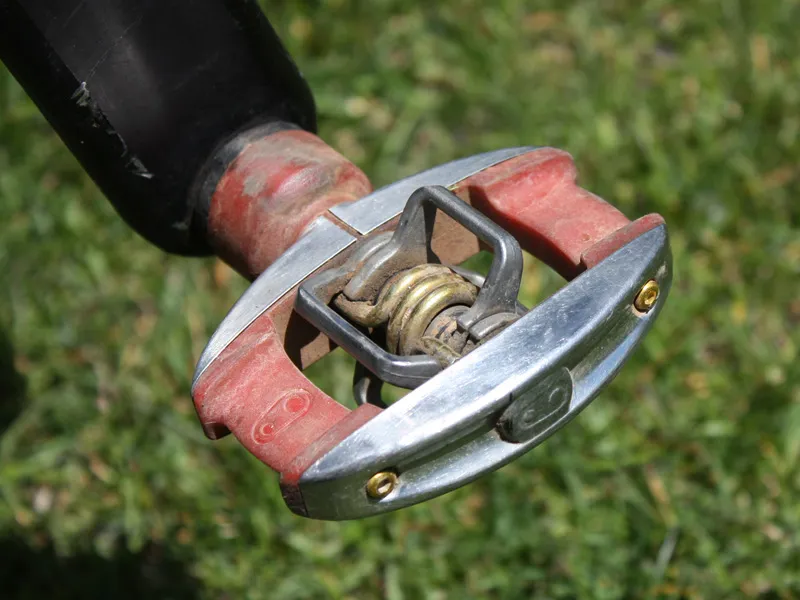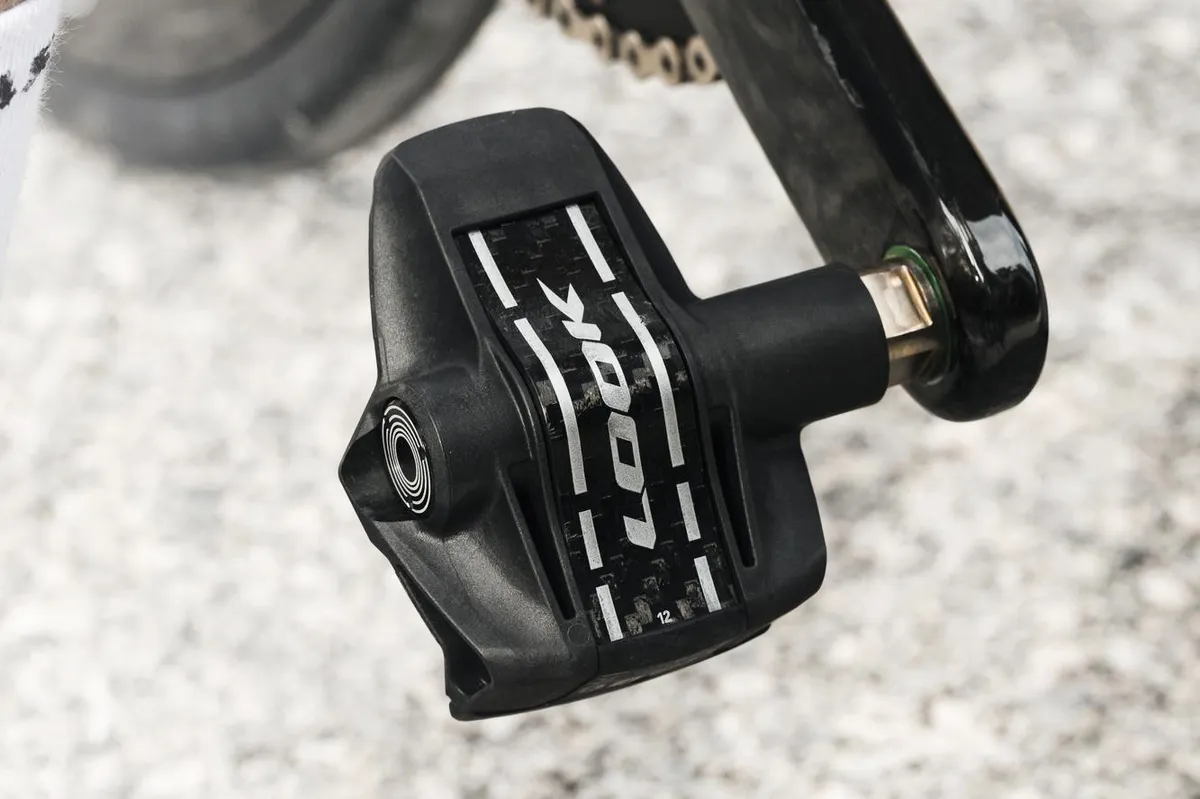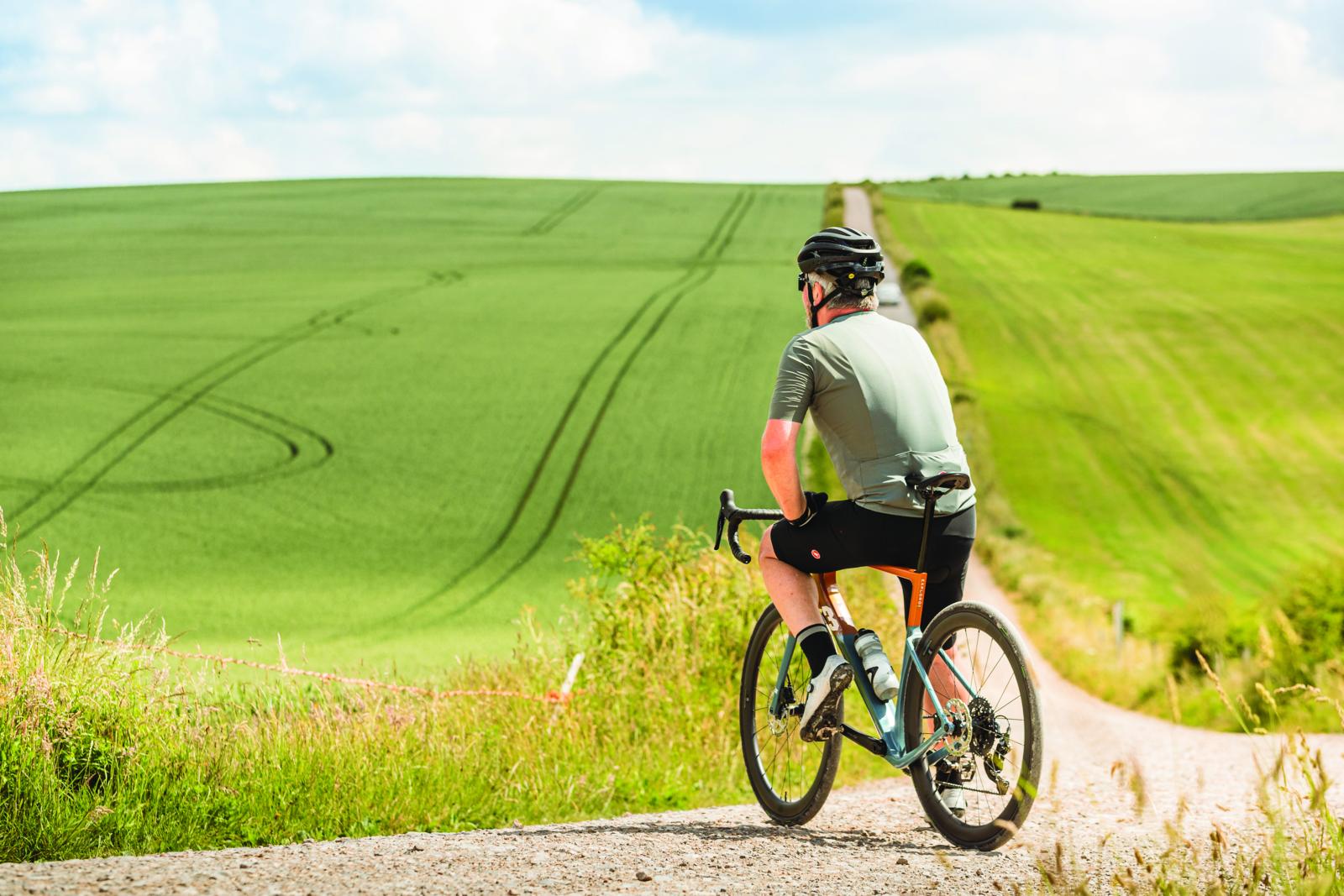With the news of PW8 and Ekoi teaming up on an all-new PW8 x Ekoi road pedal system, I began to ponder why road pedals have barely progressed since the 1980s.
The new system is a bold one. The pedal itself has no moving parts for the engagement. It requires a dedicated shoe (produced by Ekoi) and the ‘cleats’ consist of only two small pieces.
This approach gives the shoe direct contact with the pedal, a first in road shoe/pedal design.
So why has it taken this long for such a radical change in pedal design to come about?
A brief history of clipless road pedals

Some would argue Cinelli’s 1970 cageless cleat and pedal, the M71, was the first of its kind. However, despite finding favour among track riders, it wasn’t really embraced on the road due to its scary engagement where you slide the cleat into the U-channel shaped platform, which locks you in with no easy release and zero float.
It was very hard to get out of in an emergency and offered zero adjustability.
Look at the storied history of bike tech, and as far back as the 1890s, there was a slew of patents for clipless pedal designs, from magnetic (H.Tudor) to suction (Elijah Harris).
It seems that even back then, riders were looking for alternatives to the clip and strap quill pedal.
It was the debut of Look’s 1984 pedal, the Pédales Automatiques, that revolutionised road cycling.

However, in the intervening 41 years, little has happened in the way of innovation.
Yes, a couple of years after Look’s debut, fellow French company Time entered the fray and introduced float to the pedal closure for the first time.
Shimano brought the SPD-SL to market in 2003, more than a decade after the mountain bike SPD debuted.

Perhaps it's road cycling’s inherent conservatism that has stifled pedal design.
Just consider how long it has taken for disc brakes and tubeless tyres to be fully accepted. It took years after mountain biking had embraced these tech advancements.
There have been some innovations in road bike pedals, but none have taken the crown from the hegemony of the single-sided, plastic cleat format. Crankbrothers tried in 2007 with the very user-friendly Quattro, which took the four-way entry of the Eggbeater pedal and housed it with a low-profile road platform.

With cleats that combined a carrier with brass engagement pieces, it looked to be a winner. The cleats would outlast plastic, they offered easy entry from the dual-sided platform and the weight was low. They didn’t catch on, however, with Crankbrothers discontinuing the Quattro in 2017, although cleats are still available.
Time’s I-Clic, launched in 2010, refined the click-in design of Look and Shimano systems by reversing the entry, instead of having to push through the spring tension as with standard road clipless pedals.
Time took the modern ski-binding theory, where the pedal is open, and when you enter with your cleated shoe, it closes (as with a mousetrap). It was a clever system, but more of a tweak rather than a whole new method.

Speedplay’s unique lollipop design from 1989 is very different from the norm. With a minimal pedal and a large multi-part cleat, it’s great for maximum float, with lots of adjustability and two-sided entry. The pedals gained a cult following, but did little to change the status quo.
What’s wrong with road pedals anyway?

While we can say road pedals are doing a job admirably, I’d argue they could be better.
Firstly, the single-sided design. Yes, I understand that it lowers stack height and keeps things lighter and simpler.
However, early clipless pedals were weighted a little, so they hung engagement-side up. Most modern lightweight road pedals don’t, so we always have the little dance of flicking the pedal around when setting off and trying to locate it. This all happens 'blind' while we're looking out for traffic and other riders.
Then there are the cleats themselves; the plastic construction means they start wearing almost from day one. That means from the first ride on fresh cleats, every time you go out, the performance is compromised – and the degradation continues until they fail.
If the worst happens and you get a mechanical you can’t fix, walking in road shoes is awkward and will kill your cleats. Surely a cleat that doesn’t deposit microplastic as it wears isn’t beyond the wit of man.
Plastic cleats are wearing thin

On average, I’d say my road cleats last half of the time my (metal) gravel/mountain bike cleats do.
It’s an expensive business for a small performance gain compared to mountain bike cleats. Perhaps I should just put my money where my mouth is and ditch road pedals in favour of mountain bike pedals.
Back in the noughties, Ritchey did such a thing with its long-since-retired V road pedals – lightweight, single-sided road pedals that use a mountain bike cleat.
However, with pretty much all road shoes being three-bolt cleat only the Ritchey design had a very limited market.
What do I want?
I love the minimal look of a single-sided road pedal, but I want cleats that last, are better for the environment and easier to walk in, with simple, swift engagement and release. That’s not too much to ask, is it?
PW8’s design is a bold step forward

That brings us to the first serious innovation in road pedals since the noughties.
Initial designs for what would become the PW8 x Ekoi system by Pascal Nobile (a ski/mountaineering binding designer) caught the eye of Ekoi CEO Jean Christophe Rattel, and they formed the PW8 company.
Ekoi is quick to point out that PW8 isn’t exclusive to Ekoi, and that other shoe manufacturers are currently developing compatible shoes for the PW8 pedal system.
The new pedal system, which has been approved by the UCI (February 2025), has been developed over four years and tested for two years by a suite of pro and ex-pro riders, including Claudio Chiappucci, Michele Bartoli, Julien Absalon, Nicolas Roche and Philippe Gilbert.
That group of riders put in a combined distance of 58,000km. Overall testing year-round has totalled more than 200,000km.

Pro continental team Nice Métropole Côte d'Azur will use the pedals throughout 2025, with riders such as Finnish champion Jaakko Hänninen posting PBs for 5- and 20-minute power output using the PW8 system.
Its huge platform size means a contact area of 1,500mm2 compared to the Look Blade’s 705mm2.

The minimal design has also enabled the axle-to-sole (stack) distance to be reduced to 8mm, compared to Shimano’s 13.7mm, Time’s Xpro at 13.5mm and Look's Keo at 14.8mm. Only Speedplay gets close with a stack height between 8.5mm and 11mm.
Finally, the weight is low, with the pedals only 105g each and the cleats 15g each – a total of 225g, although you do need a dedicated shoe.

The first iteration here is comprised of a composite body and steel axle. A ti-axle version with a 20g per pedal saving is expected in 2025 and a full-carbon version (body and axle) that shaves the weight down to 65g is set for release at the end of 2026.

PW8 claims this increase means optimal power transfer and helps to reduce dead spots during pedalling.
The brand also says that because of the reduced profile, its system is the most aerodynamic available. This is according to testing at PW8's Marseille wind tunnel, where it measured an 11% improvement in efficiency over a leading rival.
You can customise the position of the cleats (two angular options per cleat: 0°-1.5° or 3°-6° plus a vertical and lateral cleat adjustment).
Lastly, because PW8 has integrated most of the cleat system into the carbon sole of the shoe, it was able (in collaboration with Michelin) to add a studded ridge around the cleat to enable easier walking and keep the cleat free of accidental damage.

The pedals retail for £163.40 / $179.99 / €149.99, with the shoe and pedal combination priced at £599.17 / $648.98 / €549.98. Lower-priced compatible shoes are on the way from Ekoi later in the year.
I’ve yet to try out the PW8 x Ekoi pedal system fully, but I hope PW8 has success with such a bold design. Hopefully, it’ll be a wake-up call to the market leaders, Look, Time and Shimano.
I think now is the time to develop a better system, a radical rethink of pedals that have been tweaked and improved but basically haven’t changed since 1984.
That’s when bikes were lugged steel, Dura-Ace was six-speed, we shifted from the down tube and brakes were single-pivot. Surely, we can ask for better now.
